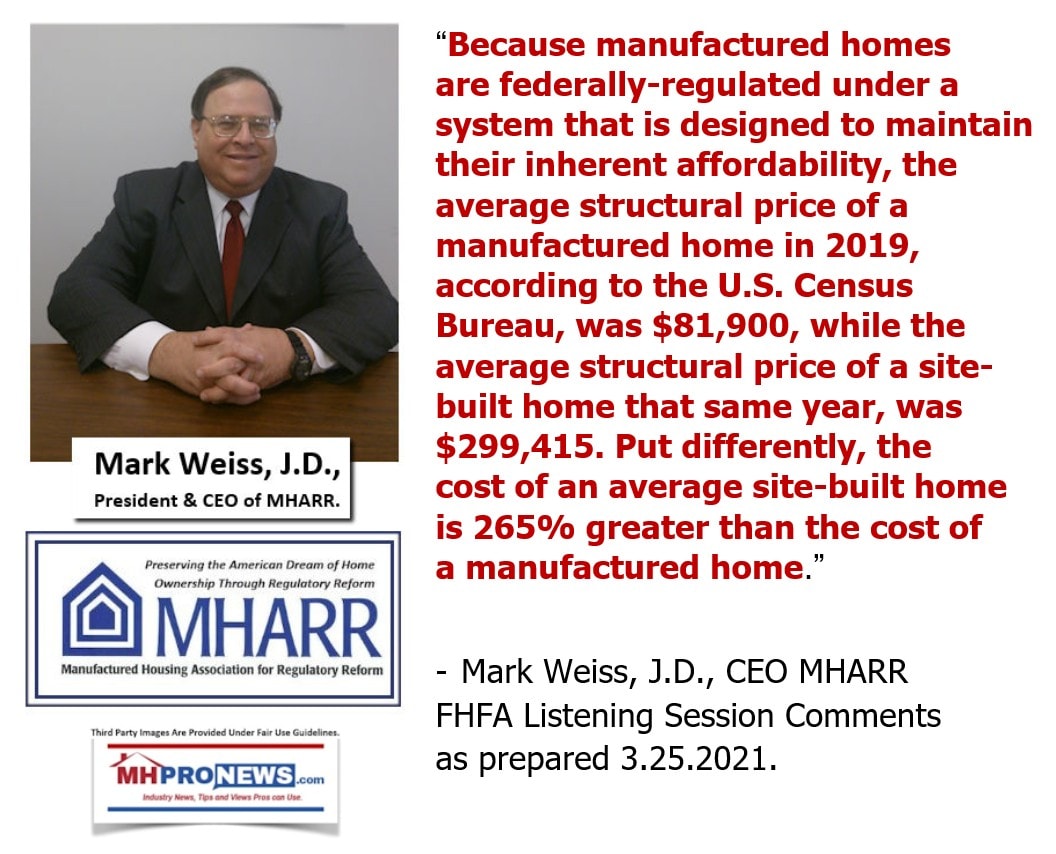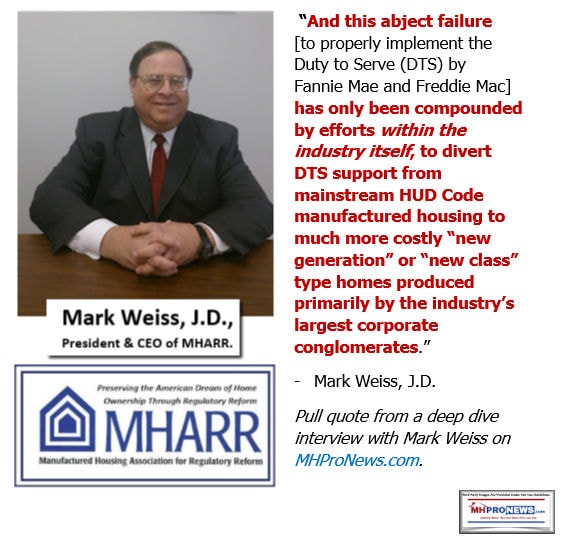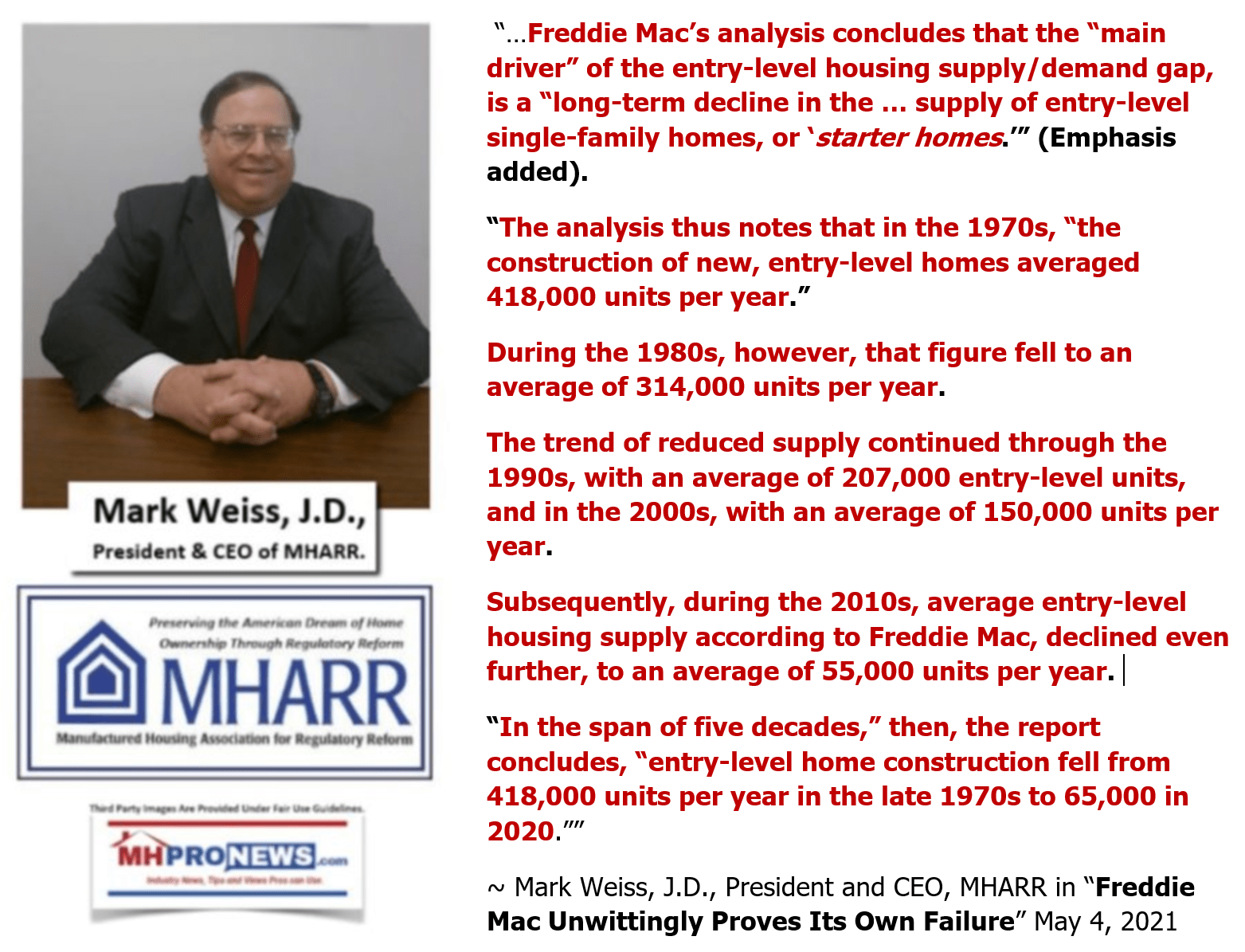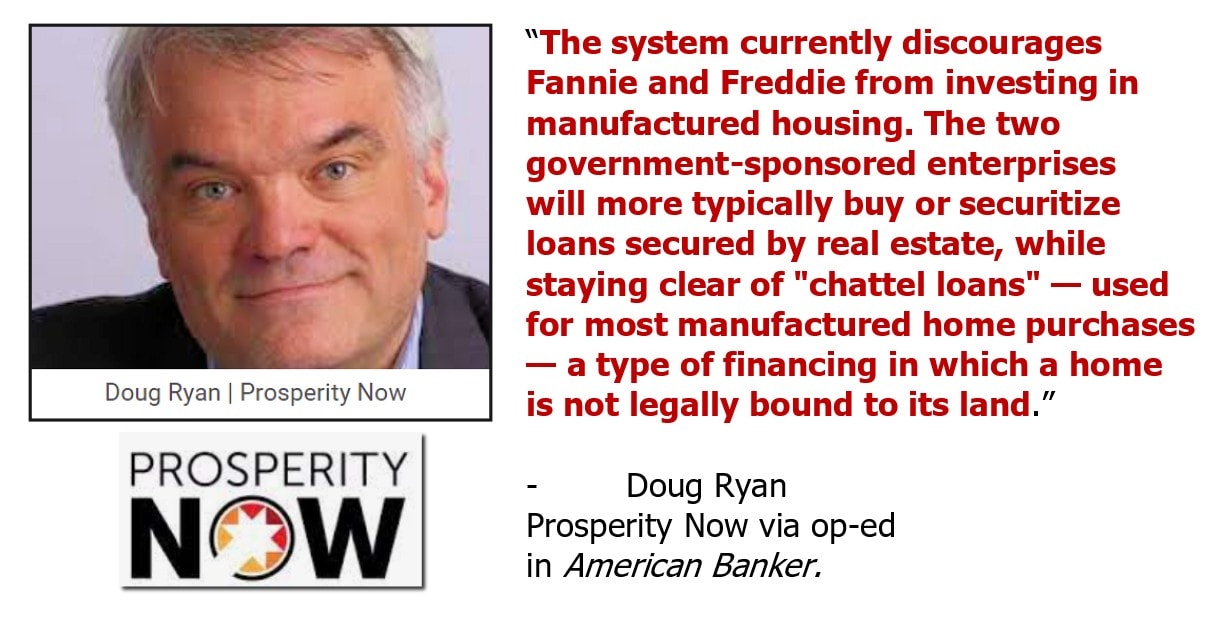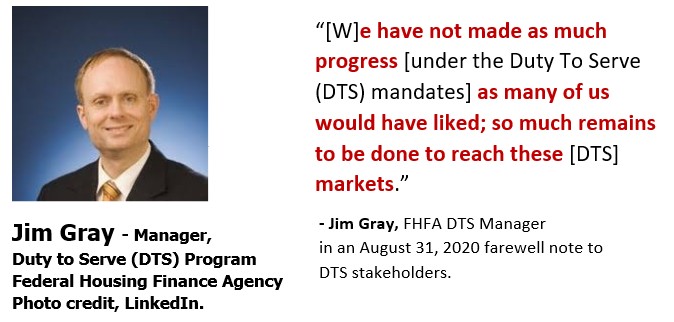The American Dream has to various degrees always included the ideal of home ownership. As conventional housing prices have long been out of reach for millions with more modest earnings and/or a smaller housing budget, the evolution from 1930s-1940s era trailer houses into larger mobile homes occurred during the 1950s into the early 1970s. While many of those post-trailer house era mobile homes were built to durable standards, as is evidenced by the fact that some 2 million mobile homes are still in use now, some of those old mobile homes were frankly not built to responsible quality, energy, or safety standards. In the wake of 60 Minutes and other media exposés on then shoddy mobile homes, the mobile home industry’s leaders of that era who believed in quality and consumer safeguards decided to seek preemptive federal construction standards. That effort resulted in the creation of the Manufactured Housing Construction and Safety Standards. Those federal standards, then and now, are largely administered by the U.S. Department of Housing and Urban Development (HUD). The first true “manufactured homes” built to HUD administered construction, safety, and energy standards were officially born on June 15, 1976.
Besides establishing construction, energy, and safety standards, the “HUD Code” for manufactured housing also required inspection by third-parties of the construction of new manufactured homes. To certify those new manufactured homes meet federal standards, a red HUD label is affixed to the tail end of the dwelling after the various in-production center inspections occurs.

Additional information on manufactured housing is available in the video interview with transcript and illustrations shown below.

The video transcript for the video below is found in the illustrated report linked above.
So, today – June 15, 2021 – marks the 45th anniversary of those federal standards that established the HUD Code. The HUD Code standards formally ended the building of mobile homes and established the third-party inspected and administered standards for HUD by third-party inspectors. It is also why the terminology matters, because manufactured homes had to meet construction, energy, and safety standards that numbers of mobile homes of yore did not.
In 1973 and 1974, the mobile homes of yesteryear hit record levels of sales during the post-war affordable housing demand boom. They exceeded 500,000 new housing units both years. That was when the U.S. population was just a fraction of the size that it is today. More on that further below.


The video above from CBS Sunday morning shows film clips that reflect the old trailer houses, which evolved into mobile homes, and finally into manufactured homes. The reporter in the video is incorrect in using the term “mobile home” (or by too many, ‘trailer house’) in that video. The home above and several in their report are “manufactured homes,” not ‘mobile homes.’ That correction noted, overall their video does a good job of debunking several mistaken ideas. For instance, even millionaires and some billionaires own a modern manufactured home. CBS shows several interior shots of attractive manufactured homes overlooking the ocean in an exclusive high-end neighborhood that has been home to several entertainers and stars of various kinds.

Unlike CBS, the video below uses accurate terminology throughout.
The MHLivingNews video that follows features Dick Moore, who’s business has long carried an A to A+ rating with the Better Business Bureau (BBB). Moore is not a client, he was interviewed because he spans the history of the evolution from trailers, to mobile homes, into the manufactured home era. As you listen to Moore’s common-sense explanations, you may quickly grasp why some common beliefs are obviously mistaken. The video below include classic trailer houses, mobile homes, as well as modern manufactured home stills and video clips, while you listen to Moore share his decades of first-hand experiences.
The next video features one of the most controversial topics about manufactured homes. It debunks several incorrect notions about manufactured home performance and durability during windstorms. It should be noted that HUD Secretary Marcia Fudge and prior HUD Secretary Ben Carson have both stressed that modern manufactured homes are ‘resilient’ in windstorms.
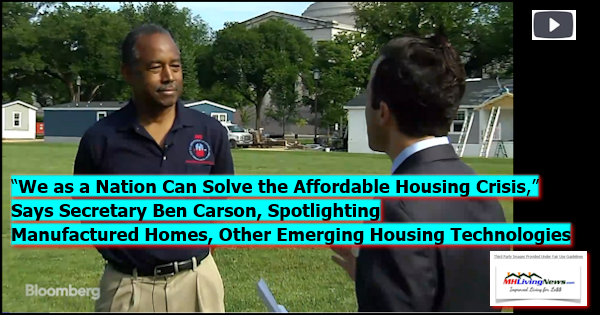
An exclusive report that features the facts on that topic, plus a surprising on the record revelations from National Weather Service (NWS) expert Greg Schoor to MHLivingNews is shown below.

The exclusive video below is with the first administrator of the Office of Manufactured Housing Programs (OHMP) established by the Manufactured Housing Improvement Act of 2000 (MHIA or 2000 Reform law). As a federal official who oversaw the program for several years, Bill Matchneer, J.D., was in a unique position to comment on the issues raised by MHLivingNews in that video.

In less than 725 words, the factual and evidence-based statements – plus the videos – above debunk common myths. It corrects the record on several facts about modern manufactured homes, and why they are not the same as the trailer houses or mobile homes of yore. To learn more the next two reports cites additional third-party research that demonstrates that manufactured homes can appreciate for much the same reasons that conventional housing does.


With that impressive snapshot of factual information in mind, it also begs a serious question. Why is it that manufactured homes are not more embraced during a growing affordable housing crisis?
That is a topic explored in the reports linked below. Suffice it to say for now that several billionaires and often billion-dollar brands are working to consolidate the industry for their own benefit, and to do that, they have apparently allowed the industry to shrink. Shrinking the industry sends a message to possible investors that do not look carefully at the ‘industry politics’ and history of the industry. That message? For those who do not dig deeply enough, it is that the industry is too small to consider. That in turn hurts consumers, taxpayers, honest independents, and others.
Who says? There are an array of outside studies that have made various evidence-based accusations. For instance, the Minneapolis Federal Reserve senior economist James A. “Jim” Schmitz Jr. and his colleagues have accused HUD, builders, and nonprofit at colluding to keep the industry small. Part of how they achieve that is by providing subsidies to conventional builders for so-called ‘affordable’ housing.
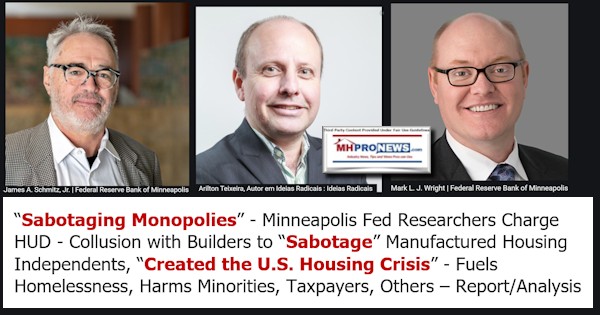
Samuel “Sam” Strommen with Knudson Law, after a careful study, documented with over 100 footnotes his case that manufactured homes are being slowly monopolized while federal and other officials look the other way. But Strommen also stresses the quality and value of modern manufactured homes.


Those concerns are echoed by the Manufactured Housing Association for Regulatory Reform (MHARR), which has accused the Manufactured Housing Institute (MHI) and their larger brands of working to subvert the application of good existing laws from within.
Prosperity Now’s Doug Ryan has made similar statements that buttress what MHARR’s Weiss has said.
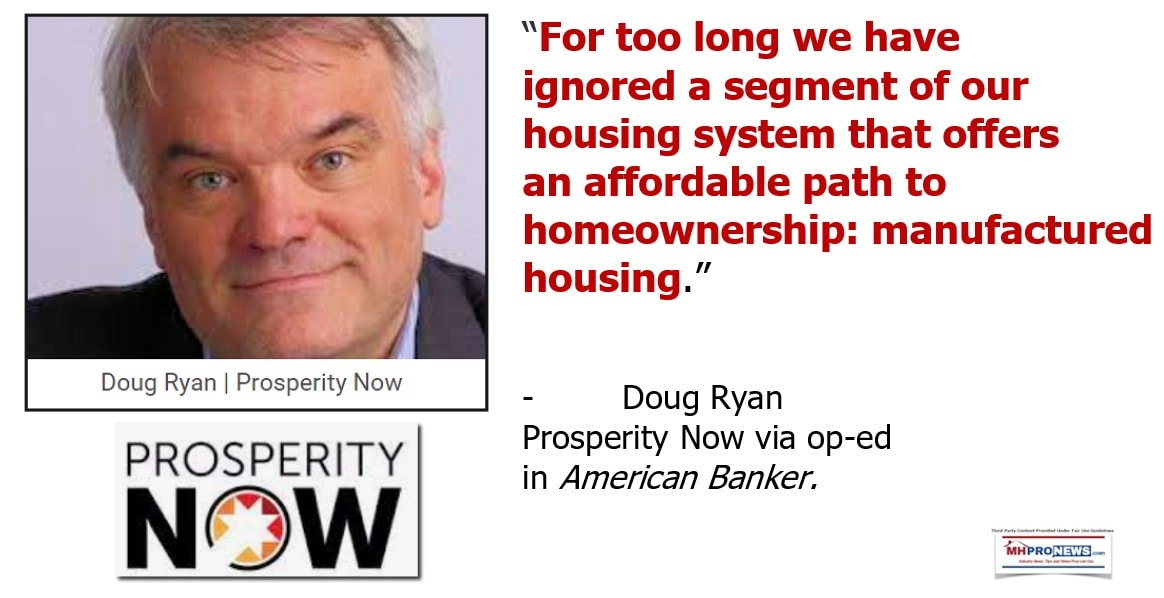
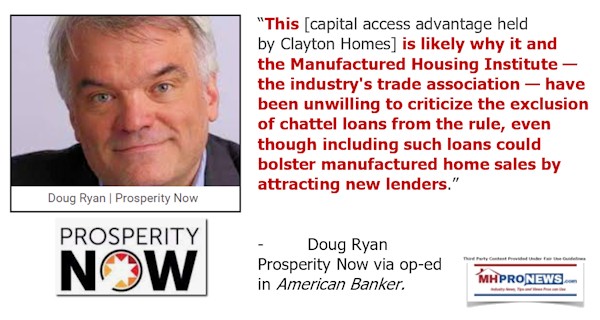
Ironically, even then FHFA program manager Jim Gray, who has left the federal agency since making this comment, admits to much of the broad brush strokes of the allegations cited above.
On this date, as of mid-morning, Berkshire Hathaway (BRK) owned Clayton Homes and their allies dominated MHI has failed to provide so much as a Facebook post on June as National Homeownership Month. Nor have they done so for several prior years. So, it is no surprise that there is not a peep about this being the 45th anniversary of HUD Code manufactured housing either. Such oversights are more evidence that MHI postures being pro-industry, but in fact are often a haven for consolidators of the industry who sadly have a reputation for problematic behavior.
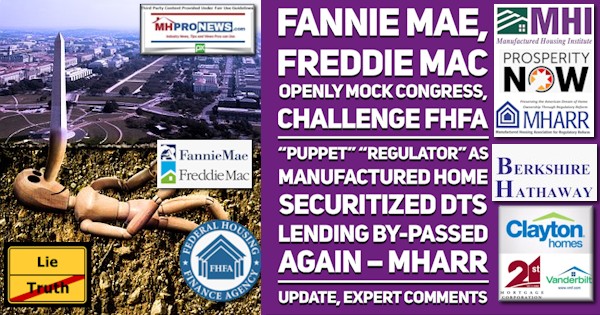

Per Mark Weiss, J.D., President and CEO of the Manufactured Housing Association for Regulatory Reform (MHARR), the following explains the structure and value of the legislation that resulted in the modern affordable manufactured homes whose ‘birthday’ is celebrated today.

“One major area in which HUD has failed, however — to the detriment of both the industry and American consumers of affordable housing — has been with regard to federal preemption. The 2000 reform law significantly expanded and enhanced the scope of federal preemption for the HUD standards and HUD regulation of manufactured housing in order to promote the federal objectives of both the 1974 and 2000 laws. This includes the preemption of state and local “requirements” which impair those objectives as well as federal superintendence of the industry. Discriminatory zoning that excludes manufactured housing undermines those federal objectives, but has not been confronted by HUD to the full extent of its authority under federal law. The entire industry must demand that this key 2000 law reform be fully implemented by HUD.”
It should be noted that on paper, the industry does seem to be united on this topic. But in practice, as was noted above, a closer look reveals that there has been purported posturing vs. performance when it comes to Clayton Homes backed MHI. To explore that claim, see the deep dive below. That document has thousands of words to Congress from Kevin Clayton himself.

Summing Up and Conclusion
Here on MHLivingNews, we stress a complete, factually accurate, and evidence-based view of manufactured housing. Manufactured homes are a superior option for millions who want to be homeowners. Sadly, there are those in our industry that wise consumers would be prudent to avoid doing business with.
To learn more, see the related reports linked from herein, or use the search tool to find an array of facts, videos, illustrations, and interviews from those who live in and love their manufactured home.
##




That’s a wrap on this installment of “News through the lens of manufactured homes and factory-built housing” © where “We Provide, You Decide.” © ## (Affordable housing, manufactured homes, reports, fact-checks, analysis, and commentary. Third-party images or content are provided under fair use guidelines for media.) (See Related Reports, further below. Text/image boxes often are hot-linked to other reports that can be access by clicking on them.)

By L.A. “Tony” Kovach – for MHLivingNews.com.
Tony earned a journalism scholarship and earned numerous awards in history and in manufactured housing. For example, he earned the prestigious Lottinville Award in history from the University of Oklahoma, where he studied history and business management. He’s a managing member and co-founder of LifeStyle Factory Homes, LLC, the parent company to MHProNews, and MHLivingNews.com. This article reflects the LLC’s and/or the writer’s position, and may or may not reflect the views of sponsors or supporters.
Connect on LinkedIn: http://www.linkedin.com/in/latonykovach
Recent and Related Reports:
The text/image boxes below are linked to other reports, which can be accessed by clicking on them.



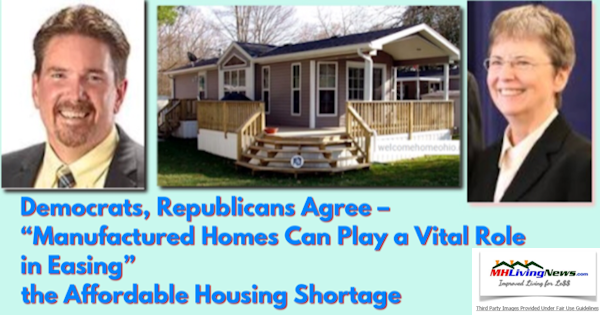
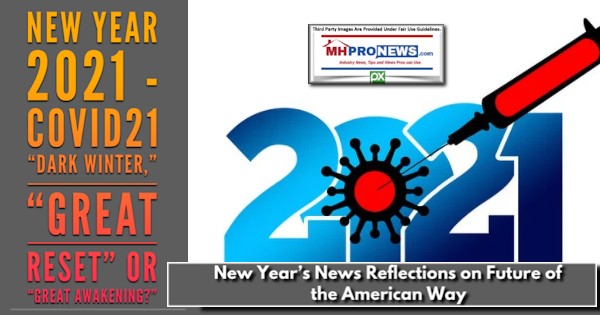
 manufacturedhomelivingnews.com Manufactured Home Living News
manufacturedhomelivingnews.com Manufactured Home Living News



